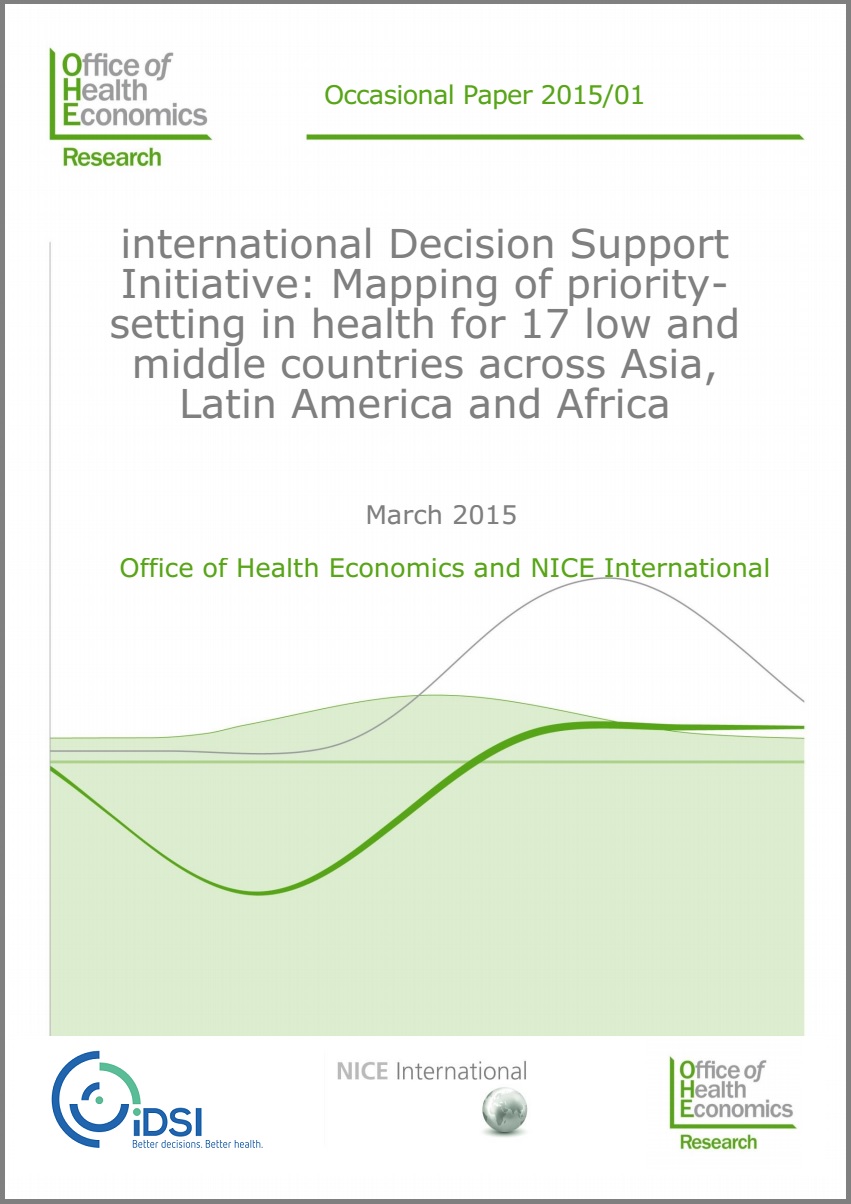Sign up to our newsletter Subscribe
International Decision Support Initiative (iDSI): Mapping of priority-setting in health in 17 low and middle countries across Asia, Latin America, and Africa

This post reports on an Issues Panel which was held at the Spanish Health Economics Association Annual Conference which took place in Granada, Spain 17-19 June 2015. The title of the panel was: Developing cost effectiveness for decision making: what can be learnt from “Value Based Pricing”?
OHE members presented in several sessions at the Spanish Health Economics Association Annual Conference which took place in Granada, Spain 17-19 June 2015. This post focuses on an Issues Panel entitled “Developing cost effectiveness for decision making: what can be learnt from “Value Based Pricing”?” which included a contribution from Adrian Towse, Director of the OHE.
The panel was organised and chaired by Allan Wailoo, Professor of Health Economics and Director of the NICE Decision Support Unit, University of Sheffield. It included the following contributions:
Adrian Towse presented “Reflections on Value Based Pricing/Assessment” with an overview of the main elements of the Value Based Pricing (VBP) proposals. These included:
He concluded that:
He described a methodology, developed as part of the VBP process, which was designed to provide substantially complete estimates of the value of “wider” economic impacts for any condition, treatment or programme, using routinely available data. Whilst the impacts of health interventions on the wellbeing of patients can be estimated with instruments such as the quality adjusted life year (QALY). Changes in an individual’s health state can, however, also have consequential economic impacts on others. For example, patients who receive treatment may return to work, contributing more in taxation, requiring less welfare benefit or improving family finances – or they may contribute more to looking after family members or providing domestic work. Changes in health may also mean patients need different amounts of formal or informal social care, as well as other resources of everyday life.
He presented estimates of the value of these impacts for representative treatments, and showed that these vary widely. In combination with a set of reference estimates, the methodology can be used to calculate the value of economic impacts associated with activity at the margin in the UK NHS producing a figure of 93p per £, i.e. the marginal £1 of NHS expenditure delivers both health gain and wider economic impacts of 93p.
James Raftery, PhD, Professor of HTA at the University of Southampton, presented on “Value based pricing in UK: a personal view of strengths, weaknesses and risks. (Or why it went wrong.)”
He recapped the history of the development of VBP from the 2007 Office of Fair Trading report recommending the Prescription Pricing Regulation Scheme (PPRS) be replaced by VBP for all branded drugs, through to NICE consulting the public on a QALY shortfall (absolute & relative) proposal in 2014 with the decision, based on the consultation results, to implement no change for the time being. Key challenges included:
He noted that NICE’s Public Health Programme had quietly made changes to its methods which were similar to those proposed under VBP. These included a shift to a societal perspective. The lack of controversy with these indicated how the factors listed above affected VBP.